Journal of Transplantation & Stem Cell Biology
Therapeutic Effect of Genistein-Stimulated Human Mesenchymal Stem Cells in Myocardial Infarction
Yong-Seok Han1, Seung Pil Yun2,3,4, Han Seok Ko2,3,4 and Sang Hun Lee1*
- 1Medical Science Research Institute, Soonchunhyang University Seoul Hospital, Seoul 336-745, Korea; Department of Medical Bioscience, Soonchunhyang University Asan, 336-745, Korea
- 2NeuroRegeneration and Stem Cell Programs, Institute for Cell Engineering, Johns Hopkins University School of Medicine, Baltimore, MD 21205, USA
- 3Department of Neurology, Johns Hopkins University School of Medicine, Baltimore, MD 21205, USA
- 4Diana Helis Henry Medical Research Foundation, New Orleans, LA 70130-2685, USA
*Address for Correspondence: Sang Hun Lee, Department of Medical Bioscience, Soonchunhyang University Asan, 336-745, Korea, Tel: +02-709-9029; Fax: +82-2-792-5812; E-mail: ykckss1114@nate.com
Citation: Han YS, Yun SP, Ko HS, Lee SH. Therapeutic Effect of Genistein-Stimulated Human Mesenchymal Stem Cells in Myocardial Infarction. J Transplant Stem Cel Biol. 2014;1(1): 7.
Copyright © 2014 Han YS, et al. This is an open access article distributed under the Creative Commons Attribution License, which permits unrestricted use, distribution, and reproduction in any medium, provided the original work is properly cited.
Journal of Transplantation & Stem Cell Biology | Volume: 1, Issue: 1
Submission: 16 July 2014 | Accepted: 25 July 2014 | Published: 30 July 2014
Reviewed & Approved by: Dr. Pranela Rameshwar, Division of Hematology and Oncology, New Jersey Medical School, USA
Abstract
Stem cells offer significant therapeutic promise for the treatment of ischemic diseases. However, stem cells transplanted into ischemic tissue exhibit limited therapeutic efficacy because of poor engraftment in vivo. Several strategies aimed at improving the survival and engraftment of stem cells in ischemic myocardium have been developed, including cell transplantation in combination with growth factor delivery, genetic modification of stem cells, and cell therapy by using scaffolds. In this study, we examined the effects of genistein on therapeutic efficacy in an acute myocardial ischemia model. We found that treatment with genistein induced enhanced human mesenchymal stem cell (hMSC) proliferation. These responses were accompanied by increases in the phosphorylation of extracellular signal-regulated kinase (ERK)1/2 signaling. Blockade of each signal pathway abrogated the genistein-induced promotion of hMSC proliferation, suggesting that genistein affects both of these essential signaling pathways. Injection of genistein stimulate-hMSCs (geni + hMSCs) into myocardial ischemic sites in vivo induced cellular proliferation and survival of cells at the ischemic sites and thereby enhanced angiogenic cytokine secretion. These results show that genistein stimulate-hMSCs exhibits markedly enhanced anti-apoptotic capabilities compared to those exhibited by hMSCs alone; thus, they enhance the repair of ischemic myocardial injury through cell survival and angiogenic cytokine production.Keywords
Hindlimb ischemia; Myocardial infarctionAbbreviations
hMSCs: human Mesenchymal Stem Cells; ERK: Extracellular Signal-Regulated Kinase; DMEM: Dulbecco’s Modified Eagle’s Medium; FBS: Fetal Bovine Serum; MI: Myocardial Ischemia; LAD: Left Anterior Descending Coronary Artery; SDS-PAGE: Sodium Dodecylsulfate-Polyacrylamide Gel Electrophoresis; PBS: Phosphate-Buffered Saline; HNA: Anti-Human Nuclear Antigen; SM: Smooth Muscle; VEGF: Vascular Endothelial Growth Factor; PCNA: Proliferating Cell Nuclear Antigen; DAPI: 4′,6-Diamidino-2-Phenylindole; FACS: Fluorescence-Activated Cell Sorter; EDTA: Ethylenediaminetetraacetic Acid; BSA: Bovine Serum Albumin; PI: Propidium Iodide; FITC: Fluorescein Isothiocyanate; ANOVA: Analysis Of Variance; CDK: Cyclin-Dependent KinaseIntroduction
Stem cell therapy holds great promise for therapeutic angiogenesis and the treatment of ischemic diseases. Endothelial progenitor cells derived from embryonic stem cells or mobilized from bone marrow contribute to postnatal neovascularization by directly participating in blood vessel formation [1,2]. Mesenchymal stem cells (MSCs) isolated from either bone marrow or adipose tissue induce angiogenesis mainly through paracrine secretion of angiogenic growth factors [3,4]. Furthermore, clinical trials involving MSC transplantation for ischemic myocardium have confirmed this possibility [5,6]. However, despite several potential advantages, stem cells have low therapeutic efficacy after engraftment into ischemic myocardium because of poor cell survival, which is one of the most important hurdles in improving the efficacy of cell therapy [7]. Thus, we propose a new method of augmenting neovascularization by overcoming the poor engraftment of MSCs into ischemic tissue and enhancing their survival.Materials and Methods
Human adipose-derived mesenchymal stem cell cultureResults
Effect of genistein on hMSC proliferation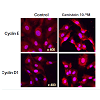 Figure 1: Effect of genistein on cell proliferation. A: Human mesenchymal stem cells (hMSCs) were incubated for 12 h with various concentration of genistein (10-1010-5 M) and then counted using a hemocytometer. Values represent the mean ± standard error (SE) of 3 independent experiments, each performed in triplicate. *P < 0.05 vs. control. B: The hMSCs were treated with genistein for various times (024 h) and the total proteins were then subjected to SDSpolyacrylamide gel electrophoresis (SDSPAGE) and blotted with cyclin-dependent kinase (CDK) 2, cyclin E, cyclin-dependent kinase (CDK) 4, cyclin D1 antibodies. The lower panel depicts the mean ± SE of 5 independent experiments for each condition, as determined from densitometry relative to β-actin. *P < 0.05 vs. 0 time point. C: hMSCs were treated with genistein for 12 h. Cyclin D1 and cyclin E levels were determined using immunofluorescence staining. The figures are representative of 4 independent experiments. D: hMSCs were treated with genistein for 12 h and ERα and β was detected by Western blotting. The lower panel depicts the mean ± SE of 5 independent experiments for each condition, as determined from densitometry relative to β-actin. *P < 0.05 vs. control.
Figure 1: Effect of genistein on cell proliferation. A: Human mesenchymal stem cells (hMSCs) were incubated for 12 h with various concentration of genistein (10-1010-5 M) and then counted using a hemocytometer. Values represent the mean ± standard error (SE) of 3 independent experiments, each performed in triplicate. *P < 0.05 vs. control. B: The hMSCs were treated with genistein for various times (024 h) and the total proteins were then subjected to SDSpolyacrylamide gel electrophoresis (SDSPAGE) and blotted with cyclin-dependent kinase (CDK) 2, cyclin E, cyclin-dependent kinase (CDK) 4, cyclin D1 antibodies. The lower panel depicts the mean ± SE of 5 independent experiments for each condition, as determined from densitometry relative to β-actin. *P < 0.05 vs. 0 time point. C: hMSCs were treated with genistein for 12 h. Cyclin D1 and cyclin E levels were determined using immunofluorescence staining. The figures are representative of 4 independent experiments. D: hMSCs were treated with genistein for 12 h and ERα and β was detected by Western blotting. The lower panel depicts the mean ± SE of 5 independent experiments for each condition, as determined from densitometry relative to β-actin. *P < 0.05 vs. control.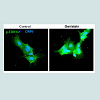 Figure 2: Involvement of extracellular signal-regulated kinase (ERK)1/2 on genistein-induced human mesenchymal stem cell (hMSC) proliferation A, B: hMSCs were treated with genistein for different times (0-120 min). Phosphorylation of ERK1/2 was detected using Western blotting and immunostaining. C: The hMSCs were pretreated with U0126 (an ERK1/2 inhibitor, 10-6 M) for 30 min before 12 h of genistein treatment and then washed with phosphate-buffered saline (PBS), fixed, stained, and analyzed using flow cytometry. Gates were manually configured to determine the percentage of cells in the S phase based on DNA content. *P < 0.05 vs. control, **P < 0.05 vs. genistein. The lower parts of (A) show protein levels as the means ± standard error of 3 experiments for each condition as determined by densitometry relative to β-actin. *P < 0.05 vs. 0 time point.
Figure 2: Involvement of extracellular signal-regulated kinase (ERK)1/2 on genistein-induced human mesenchymal stem cell (hMSC) proliferation A, B: hMSCs were treated with genistein for different times (0-120 min). Phosphorylation of ERK1/2 was detected using Western blotting and immunostaining. C: The hMSCs were pretreated with U0126 (an ERK1/2 inhibitor, 10-6 M) for 30 min before 12 h of genistein treatment and then washed with phosphate-buffered saline (PBS), fixed, stained, and analyzed using flow cytometry. Gates were manually configured to determine the percentage of cells in the S phase based on DNA content. *P < 0.05 vs. control, **P < 0.05 vs. genistein. The lower parts of (A) show protein levels as the means ± standard error of 3 experiments for each condition as determined by densitometry relative to β-actin. *P < 0.05 vs. 0 time point.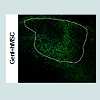 Figure 3: Extracellular signal-regulated kinase (ERK)1/2-mediated genistein-induced human mesenchymal stem cell (hMSC) proliferation and survival in the borderzone of a left ventricular infarct 3 days after myocardial ischemia. hMSCs were pretreated with U0126 for 30 min prior to a 12 h genistein (10-10 M) treatment, and the cells were transplanted into the ischemic region. A: Proliferating cell nuclear antigen (PCNA) staining for detection of proliferation of MSCs. B: Co-immunofluorescence staining for detection of proliferation (Ki67; Proliferation Marker, red) and hMSCs (human nuclear antigen (HNA)-positive cells, green), and 4′,6-diamidino-2-phenylindole (DAPI; blue) for nuclear staining. C: Co-immunofluorescence staining for detecting apoptosis (caspase-3, apoptosis marker, green) and of human endothelial progenitor cells (HNA-positive cells, red), and DAPI (blue) for nuclear staining (n = 8).
Figure 3: Extracellular signal-regulated kinase (ERK)1/2-mediated genistein-induced human mesenchymal stem cell (hMSC) proliferation and survival in the borderzone of a left ventricular infarct 3 days after myocardial ischemia. hMSCs were pretreated with U0126 for 30 min prior to a 12 h genistein (10-10 M) treatment, and the cells were transplanted into the ischemic region. A: Proliferating cell nuclear antigen (PCNA) staining for detection of proliferation of MSCs. B: Co-immunofluorescence staining for detection of proliferation (Ki67; Proliferation Marker, red) and hMSCs (human nuclear antigen (HNA)-positive cells, green), and 4′,6-diamidino-2-phenylindole (DAPI; blue) for nuclear staining. C: Co-immunofluorescence staining for detecting apoptosis (caspase-3, apoptosis marker, green) and of human endothelial progenitor cells (HNA-positive cells, red), and DAPI (blue) for nuclear staining (n = 8).Transplantation of genistein stimulate-hMSCs (geni + hMSCs) into ischemic tissue enhanced paracrine secretion of angiogenic growth factors. As shown in Figure 4A, genistein induced an increase of human angiogenic growth factor (e.g., hVEGF) expression. In order to confirm the geni + hMSCs as an inducer of human angiogenic growth factor expression in ischemic tissue, western blot analysis was used to show that expression of human angiogenic growth factors was more extensive in genistein stimulate-hMSCs (geni + hMSCs) than in hMSCs alone (Figure 4B). In addition, immunofluorescence staining for the human angiogenic growth factor hVEGF indicated that secretion from transplanted genistein stimulate-hMSC (geni + hMSCs) began within 3 days of transplantation, whereas most hMSCs transplanted alone did not secrete angiogenic growth factors until after 3 days (Figure 4C). Therefore, secretion of human growth factors was more extensive in genistein stimulate-hMSCs (geni + hMSCs) than in hMSCs transplanted alone.
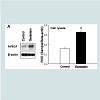 Figure 4: Enhanced secretions of angiogenic growth factors from human mesenchymal stem cells (hMSCs) stimulated with genistein in the ischemic borderzone. A: The hMSCs were cultured in serum-free medium for 24 h, and then treated with genistein for 12 h. Human-specific vascular endothelial growth factor (hVEGF) determined by Western blotting. hMSCs were cultured in serum-free medium for 24 h and then treated with genistein (10-10 M) for 12 h. B: Western blot analysis of hVEGF 3 days after transplantation of hMSCs genistein stimulate-hMSCs (geni + hMSCs) or hMSCs alone. The lower panel depicts the mean ± standard error of 5 independent experiments for each condition, as determined from densitometry relative to β-actin and alpha-tubulin. *P < 0.05 vs. control or hMSCs. C: Immunofluorescence staining of hVEGF in ischemic heart tissue 3 days after grafting of genistein stimulate-hMSCs (geni + hMSCs) or hMSCs alone (n = 8).
Figure 4: Enhanced secretions of angiogenic growth factors from human mesenchymal stem cells (hMSCs) stimulated with genistein in the ischemic borderzone. A: The hMSCs were cultured in serum-free medium for 24 h, and then treated with genistein for 12 h. Human-specific vascular endothelial growth factor (hVEGF) determined by Western blotting. hMSCs were cultured in serum-free medium for 24 h and then treated with genistein (10-10 M) for 12 h. B: Western blot analysis of hVEGF 3 days after transplantation of hMSCs genistein stimulate-hMSCs (geni + hMSCs) or hMSCs alone. The lower panel depicts the mean ± standard error of 5 independent experiments for each condition, as determined from densitometry relative to β-actin and alpha-tubulin. *P < 0.05 vs. control or hMSCs. C: Immunofluorescence staining of hVEGF in ischemic heart tissue 3 days after grafting of genistein stimulate-hMSCs (geni + hMSCs) or hMSCs alone (n = 8).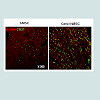 Figure 5: Enhancement of neovascularization in the ischemic borderzone by transplantation of human mesenchymal stem cells (hMSCs) stimulated with genistein. A: Immunofluorescence staining of alpha-smooth muscle actin (α-SMA; red) and CD 31 (green) in ischemic heart tissue 28 days after grafting of genistein stimulate-hMSCs (geni + hMSCs) or hMSCs alone. The bar graph shows quantitative analysis of the number of CD31+ capillaries (n = 10). B: HNA+ cells associated CD31+ vasculature and C: HNA+ cells associated α-SMA+ vasculature (n = 10).
Figure 5: Enhancement of neovascularization in the ischemic borderzone by transplantation of human mesenchymal stem cells (hMSCs) stimulated with genistein. A: Immunofluorescence staining of alpha-smooth muscle actin (α-SMA; red) and CD 31 (green) in ischemic heart tissue 28 days after grafting of genistein stimulate-hMSCs (geni + hMSCs) or hMSCs alone. The bar graph shows quantitative analysis of the number of CD31+ capillaries (n = 10). B: HNA+ cells associated CD31+ vasculature and C: HNA+ cells associated α-SMA+ vasculature (n = 10).Discussion
Previous experimental studies demonstrated that transplantation of stem/progenitor cells such as MSCs, bone marrow stem cells, and cardiac stem cells reduces ischemia-induced myocardial tissue injury and improves left ventricular function [17-20]. However, stem cells transplanted into the ischemic myocardium are susceptible to a hostile tissue microenvironment with reduced oxygen supply and free radical damage, thereby hindering the full therapeutic benefit. Previous studies have shown that genistein, a phytoestrogen, protects against MI-reperfusion injury in a rat model and promotes proliferation of estrogen-dependent breast and thyroid cancer cells [21,22]. However, it is not clear whether genistein-mediated enhancement of survival in the injured myocardium can also modulate the secretion of angiogenic cytokines and vascularization of transplanted hMSCs. Therefore, we tested whether genistein modulates hMSC biology leading to enhanced survival and function after transplantation in an ischemic myocardium.Acknowledgements
This study was supported by a National Research Foundation (NRF) grant funded by the Korean government (MEST) (2011-0009610). The funders had no role in study design, data collection or analysis, the decision to publish, or preparation of the manuscript.References
- Cho SW, Moon SH, Lee SH, Kang SW, Kim J, et al. (2007) Improvement of postnatal neovascularization by human embryonic stem cell derived endothelial-like cell transplantation in a mouse model of hindlimb ischemia. Circulation 116: 2409-2419.
- Takahashi T, Kalka C, Masuda H, Chen D, Silver M, et al. (1999) Ischemia- and cytokine-induced mobilization of bone marrow-derived endothelial progenitor cells for neovascularization. Nat Med 5: 434-438.
- Kinnaird T, Stabile E, Burnett MS, Lee CW, Barr S, et al. (2004) Marrow-derived stromal cells express genes encoding a broad spectrum of arteriogenic cytokines and promote in vitro and in vivo arteriogenesis through paracrine mechanisms. Circ Res 94: 678-685.
- Tateishi-Yuyama E, Matsubara H, Murohara T, Ikeda U, Shintani S, et al. (2002) Therapeutic angiogenesis for patients with limb ischaemia by autologous transplantation of bone-marrow cells: a pilot study and a randomised controlled trial. Lancet 360: 427-435.
- Bader AM, Brodarac A, Klose K, Bieback K, Choi YH, et al. (2014) Mechanisms of paracrine cardioprotection by cord blood mesenchymal stromal cells. Eur J Cardiothorac Surg 45: 983-92.
- Nascimento DS, Mosqueira D, Sousa LM, Teixeira M, Filipe M, et al. (2014) Human umbilical cord tissue-derived mesenchymal stromal cells attenuate remodeling following myocardial infarction by pro-angiogenic, anti-apoptotic and endogenous cell activation mechanisms. Stem Cell Res Ther 5: 5.
- Tateishi-Yuyama E, Matsubara H, Murohara T, Ikeda U, Shintani S, et al. (2002) Therapeutic angiogenesis for patients with limb ischaemia by autologous transplantation of bone-marrow cells: a pilot study and a randomised controlled trial. Lancet 360: 427-435.
- Kremastinos D, Bofilis E, Karavolias G, Papalois A, Kaklamanis L et al. (2000) Preconditioning limits myocardial infarct size in hypercholesterolemic rabbits. Atherosclerosis 150: 81-89.
- Allred CD, Allred KF, Ju YH, Virant SM, Helferich WG (2001) Soy diets containing varying amounts of genistein stimulate growth of estrogen-dependent (MCF-7) tumors in a dose-dependent manner. Cancer Res 61: 5045-5050.
- Vivacqua A, Bonofiglio D, Albanito L, Madeo A, Rago V, et al. (2006) 17beta-estradiol, genistein, and 4-hydroxytamoxifen induce the proliferation of thyroid cancer cells through the g protein-coupled receptor GPR30. Mol Pharmacol 70: 1414-1423.
- Deodato B, Altavilla D, Squadrito G, Campo GM, Arlotta M, et al. (1999) Cardioprotection by the phytoestrogen genistein in experimental myocardial ischaemia-reperfusion injury. Br J Pharmacol 128: 1683-1690.
- Squadrito F, Altavilla D, Squadrito G, Saitta A, Cucinotta D, et al. (2000) Genistein supplementation and estrogen replacement therapy improve endothelial dysfunction induced by ovariectomy in rats. Cardiovasc Res 45: 454-462.
- Squadrito F, Altavilla D, Morabito N, Crisafulli A, D’Anna R, et al. (2002) The effect of the phytoestrogen genistein on plasma nitric oxide concentrations, endothelin-1 levels and endothelium dependent vasodilation in postmenopausal women. Atherosclerosis 163: 339-347.
- Chang SA, Lee EJ, Kang HJ, Zhang SY, Kim JH, et al. (2008). Impact of myocardial infarct proteins and oscillating pressure on the differentiation of mesenchymal stem cells: effect of acute myocardial infarction on stem cell differentiation. Stem Cells 26: 1901-1912.
- Hahn JY, Cho HJ, Bae JW, Yuk HS, Kim KI, et al. (2006). Beta-catenin overexpression reduces myocardial infarct size through differential effects on cardiomyocytes and cardiac fibroblasts. J Biol Chem 281: 30979-30989.
- Lee SH, Lee JH, Asahara T, Kim YS, Jeong HC, et al. (2014) Genistein Promotes Endothelial Colony-Forming Cell (ECFC) Bioactivities and Cardiac Regeneration in Myocardial Infarction. PLoS One 9: e96155.
- Chen Y, Amende I, Hampton TG, Yang Y, Ke Q, et al. (2006) Vascular endothelial growth factor promotes cardiomyocyte differentiation of embryonic stem cells. Am J Physiol Heart Circ Physiol 291: H1653-H1658.
- Jujo K, Ii M, Losordo DW (2008) Endothelial progenitor cells in neovascularization of infarcted myocardium. J Mol Cell Cardiol 45: 530-544.
- Mangi AA, Noiseux N, Kong D, He H, Rezvani M, et al. (2003) Mesenchymal stem cells modified with Akt prevent remodeling and restore performance of infarcted hearts. Nat Med 9: 1195-1201.
- Urbanek K, Torella D, Sheikh F, De Angelis A, Nurzynska D, et al. (2005) Myocardial regeneration by activation of multipotent cardiac stem cells in ischemic heart failure. Proc Natl Acad Sci USA 102: 8692-8697.
- Vivacqua A, Bonofiglio D, Albanito L, Madeo A, Rago V, et al. (2006) 17beta-estradiol, genistein, and 4-hydroxytamoxifen induce the proliferation of thyroid cancer cells through the g protein-coupled receptor GPR30. Mol Pharmacol 70: 1414-23.
- Miodini P, Fioravanti L, Di Fronzo G, Cappelletti V (1999) The two phyto-oestrogens genistein and quercetin exert different effects on oestrogen receptor function. Br J Cancer 80: 1150-1155.
- Fu Z, Zhang W, Zhen W, Lum H, Nadler J, et al. (2010) Genistein induces pancreatic beta-cell proliferation through activation of multiple signaling pathways and prevents insulin-deficient diabetes in mice. Endocrinology 151: 3026-3037.

